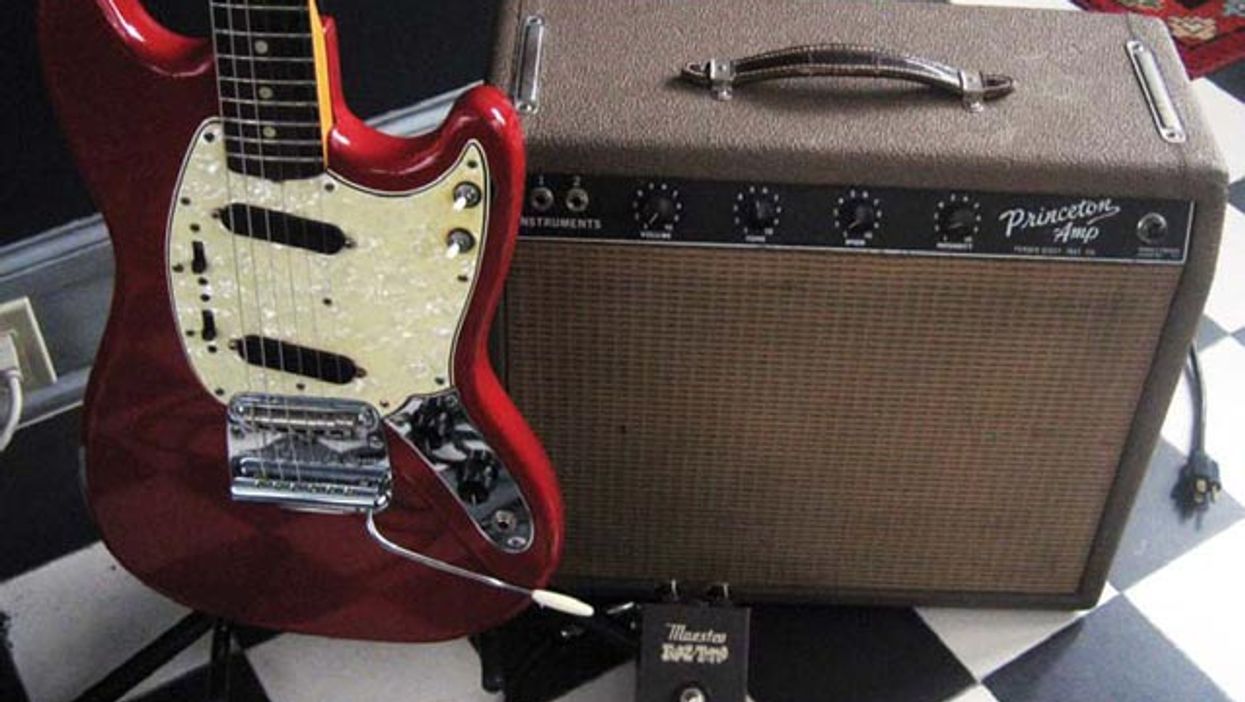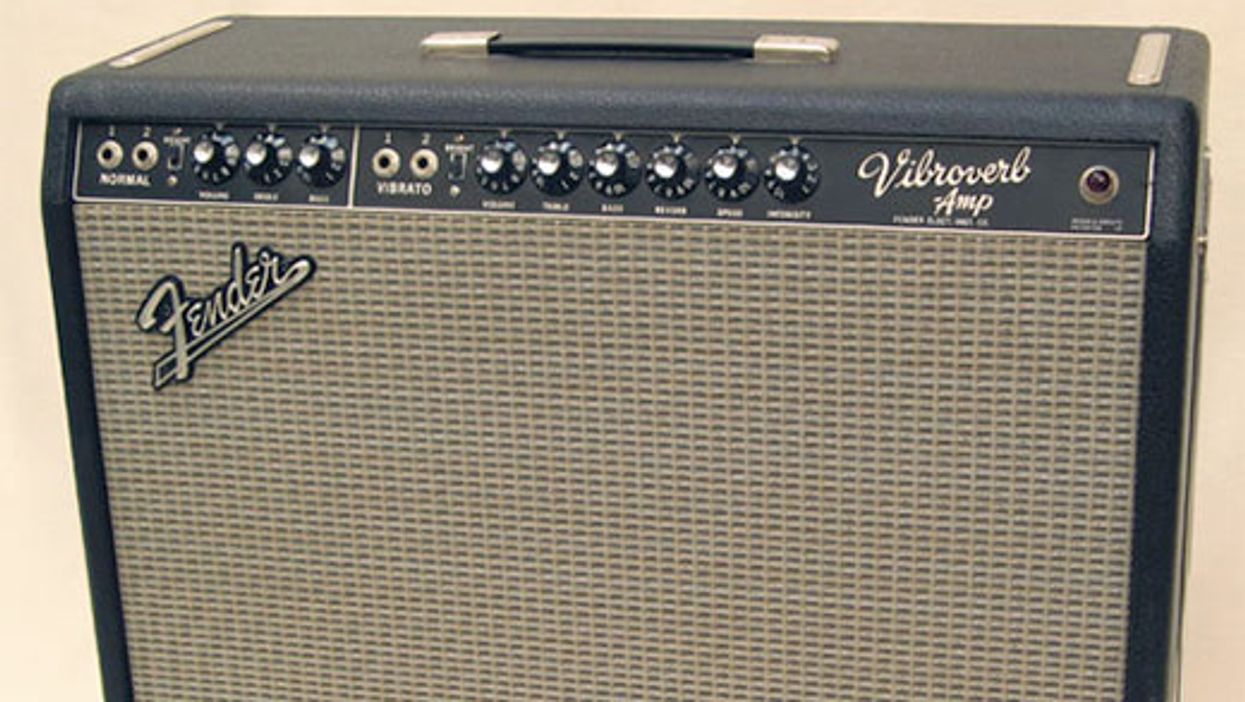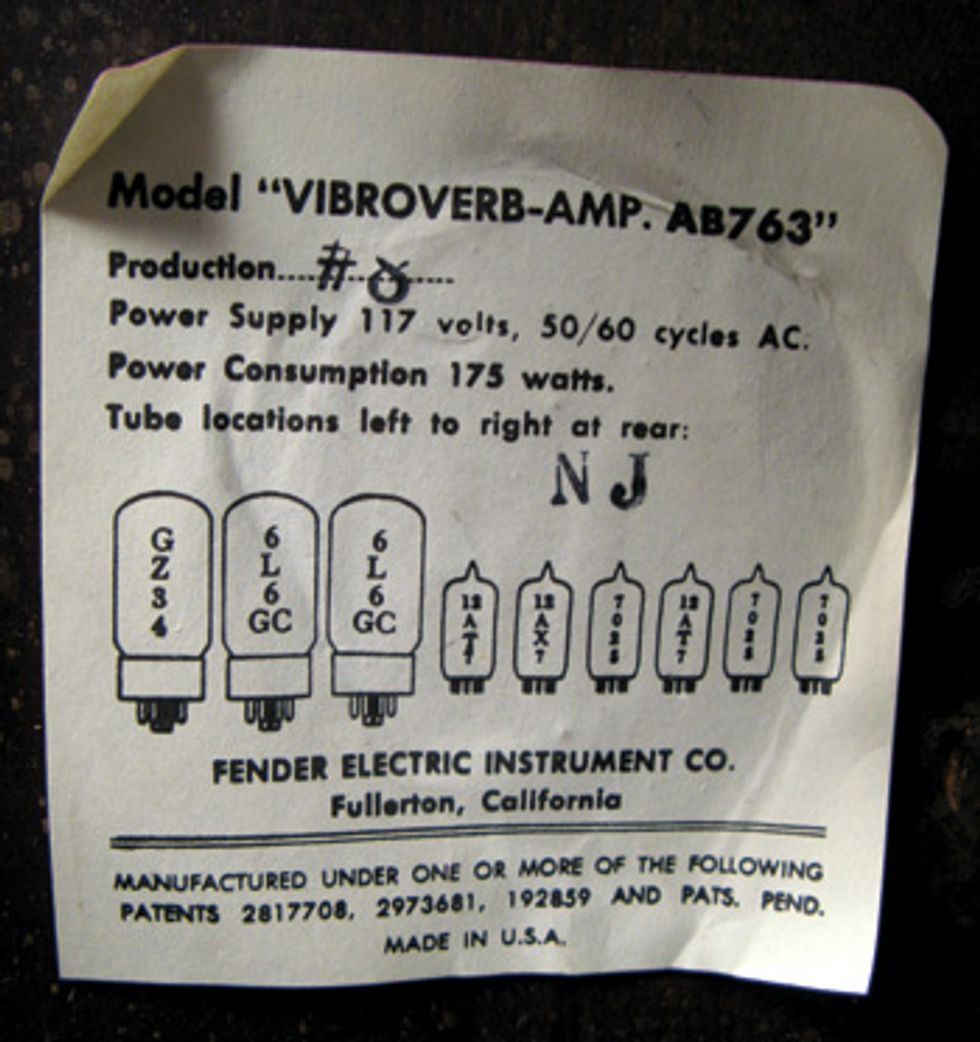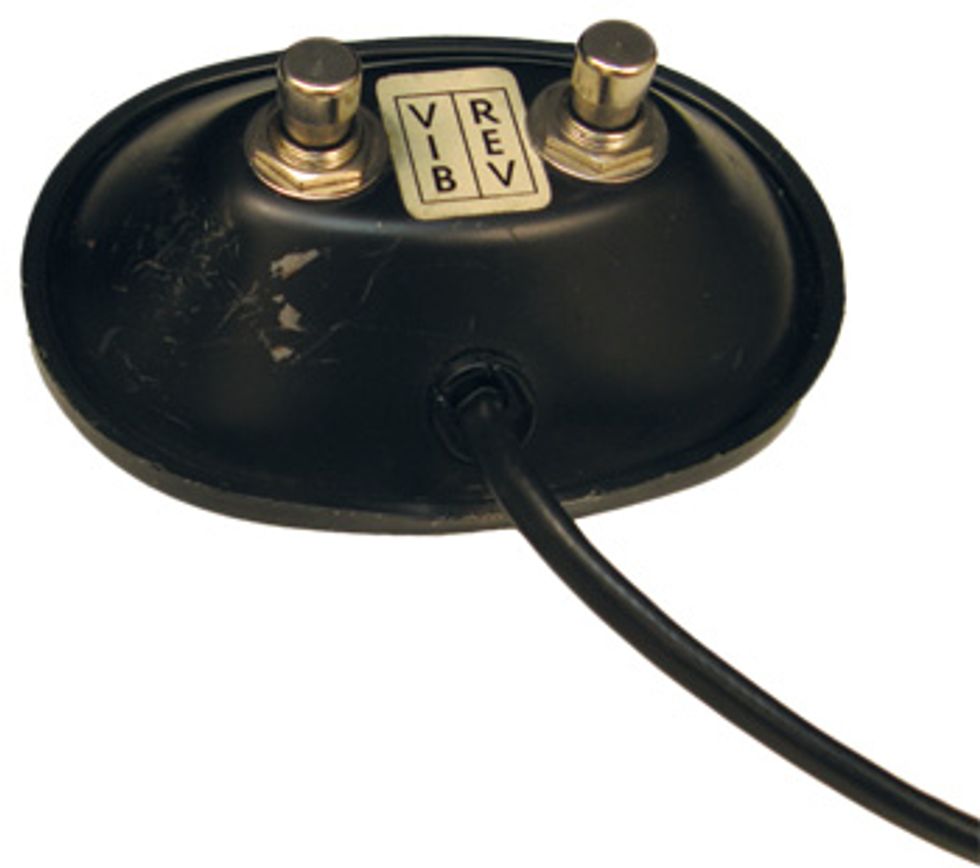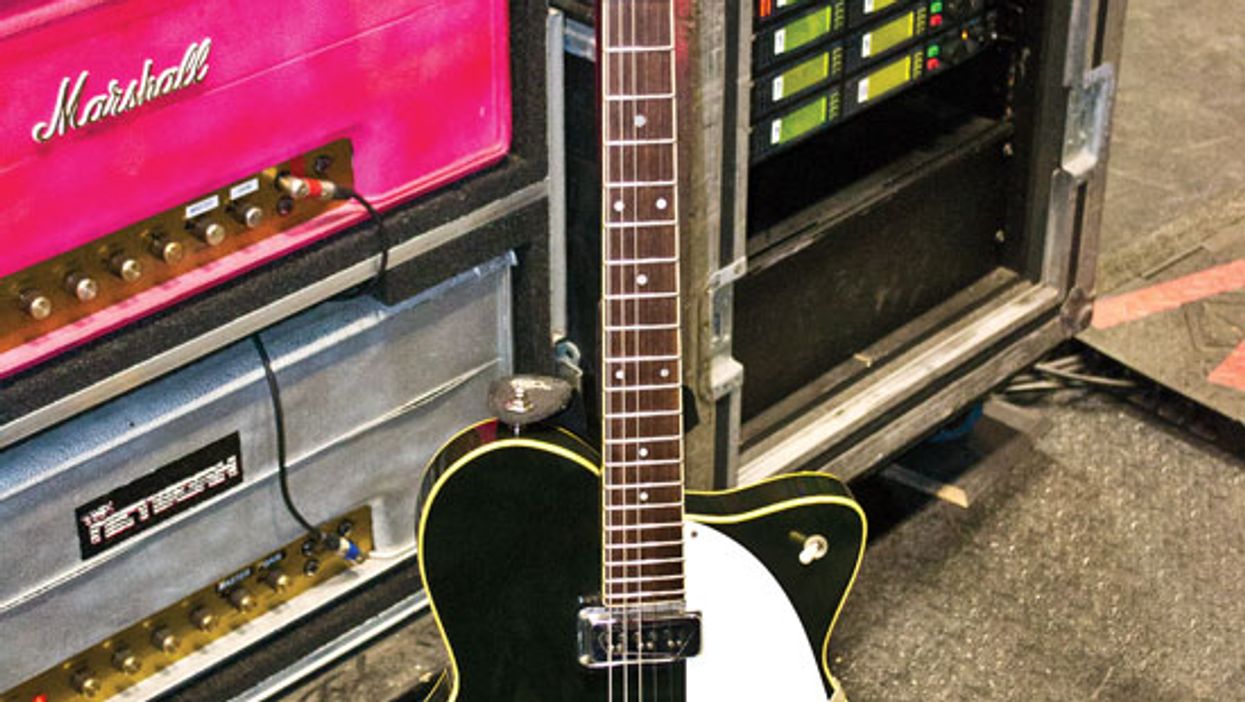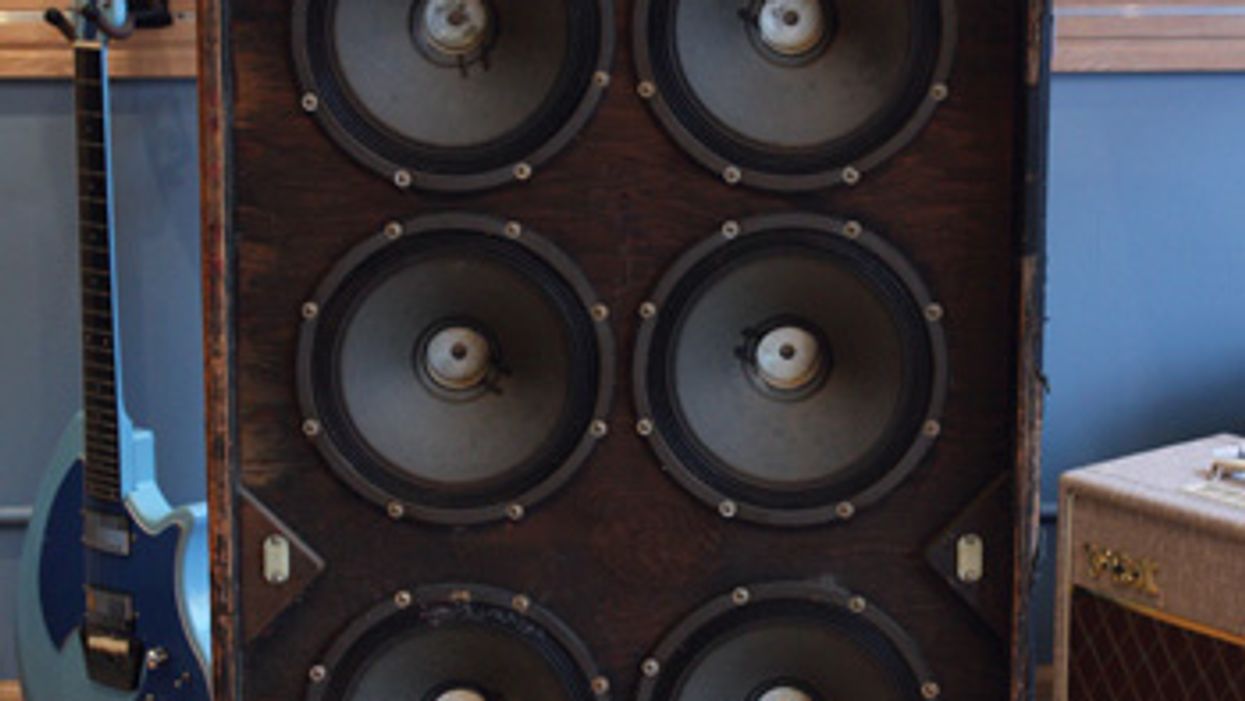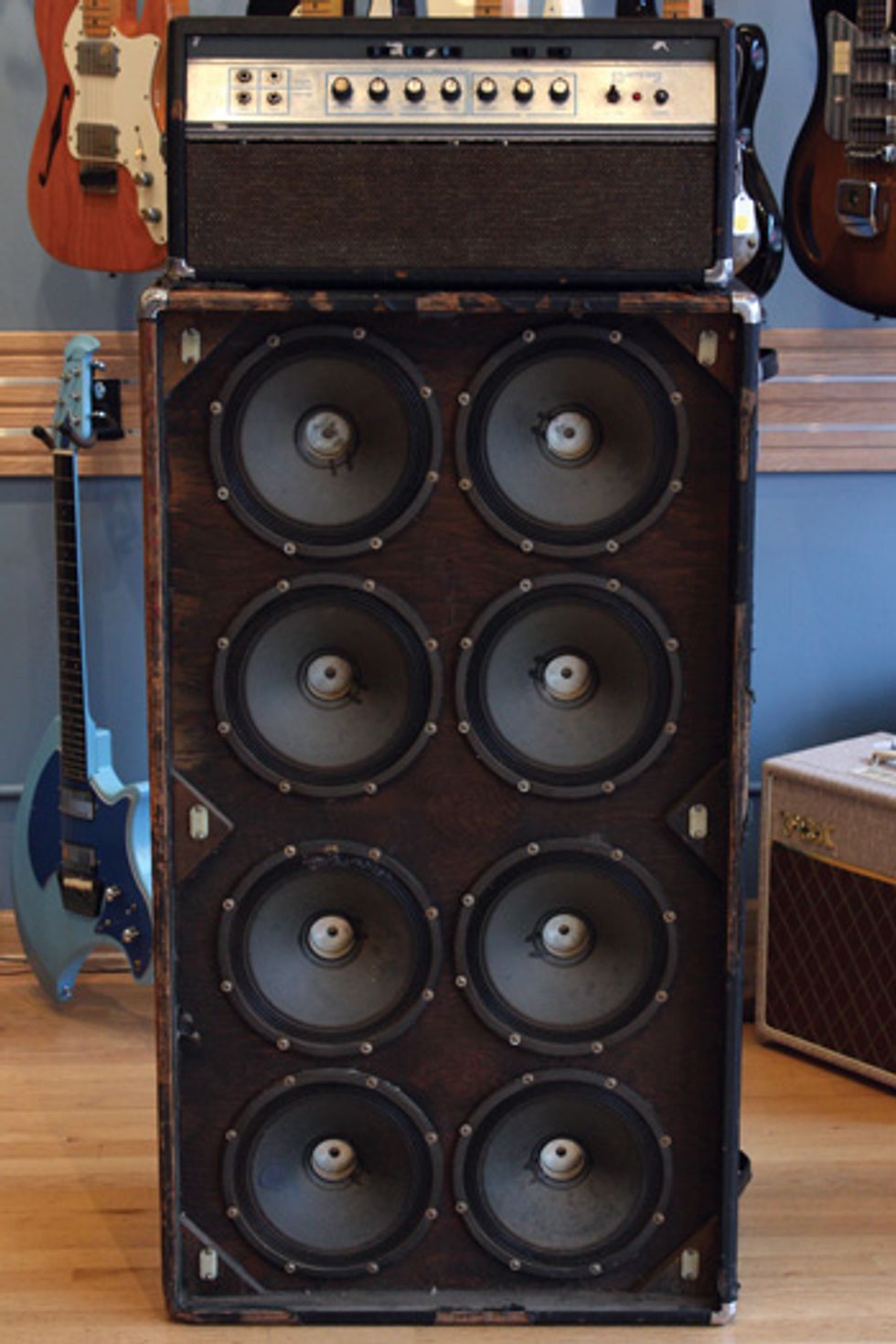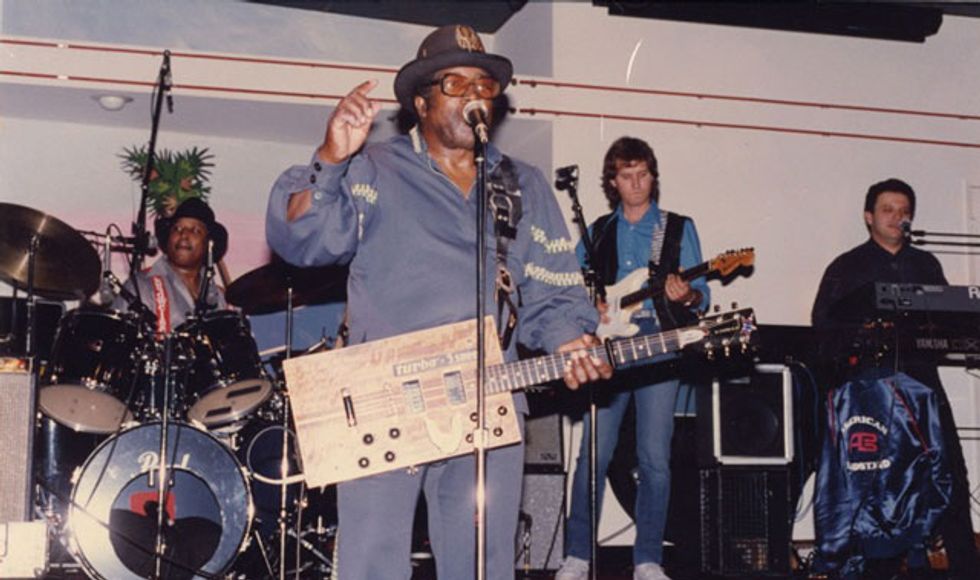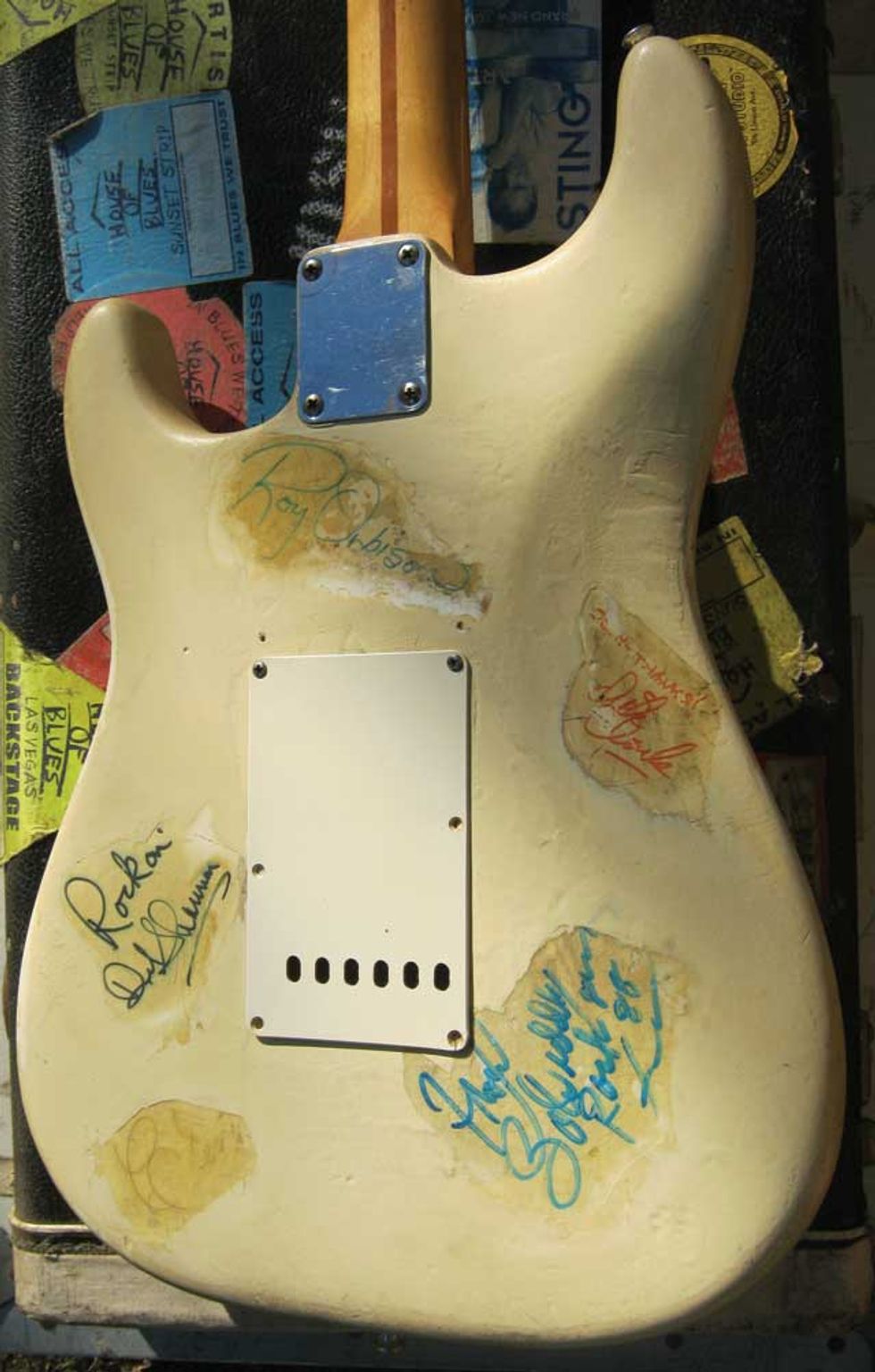Before Facebook, Twitter, and YouTube, marketing was done through business cards. A well-done business card demands respect and attention. Case in point: Patrick Bateman in American Psycho shriveling when his business card was outdone by his colleague's.
For luthiers, it's a bit more complicated than logo placement, font selection, and what background color exudes more confidence. Their business card is their axe, and the most beneficial way for a luthier to exchange credentials is by getting their guitar directly into a pro's hands. That's exactly what Gabriel Currie of Echopark Guitars did when given the chance.
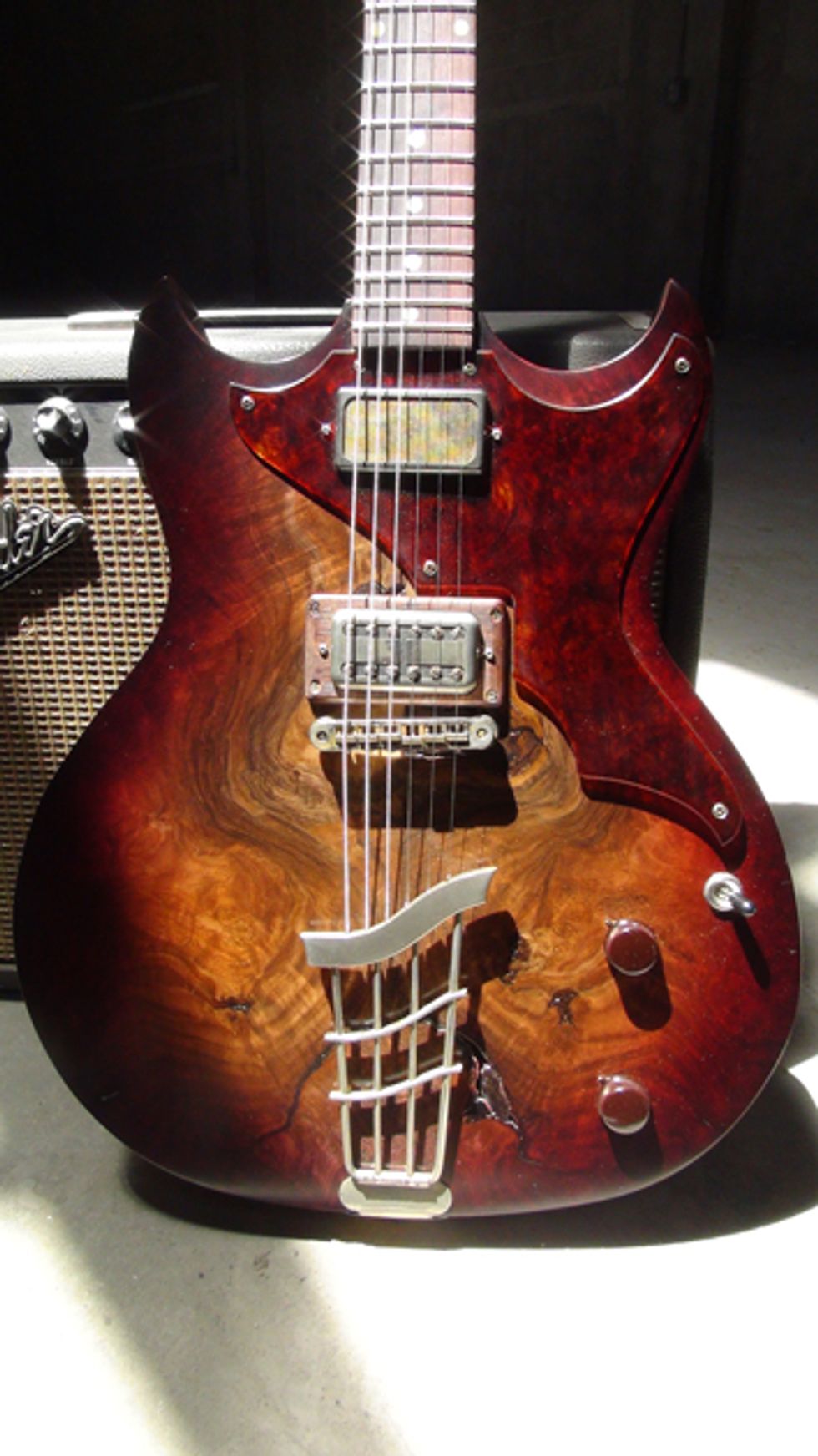
The reclaimed Honduran mahogany body of Homme's guitar is a chambered, one-piece slab. The top is a 300-year-old burl walnut (the knots still have moss and earth in them) and it was outfitted with a trapeze-style tailpiece like one from a very rare '50s Kay guitar.
In early May, Currie received an out-of-the-blue call from friend Rob Timmons of Arcane Pickups, notifying him that Queens of the Stone Age were rehearsing nearby and he should stop over. "I couldn't go over empty-handed because I'm a guitar builder—that'd be embarrassing—so I grabbed a few pieces that I recently completed to introduce myself and my brand," Currie remembers. "I met Josh, we shared a laugh, and I welcomed him to try out one of my guitars." Homme was immediately taken aback by the Downtowner Custom Koa's beefy neck size (he has a tough time finding necks to fit his hands) and its feedback-resistant P-90s. Homme asked if he could borrow them for a few days to show the rest of the band—Currie excitingly obliged.
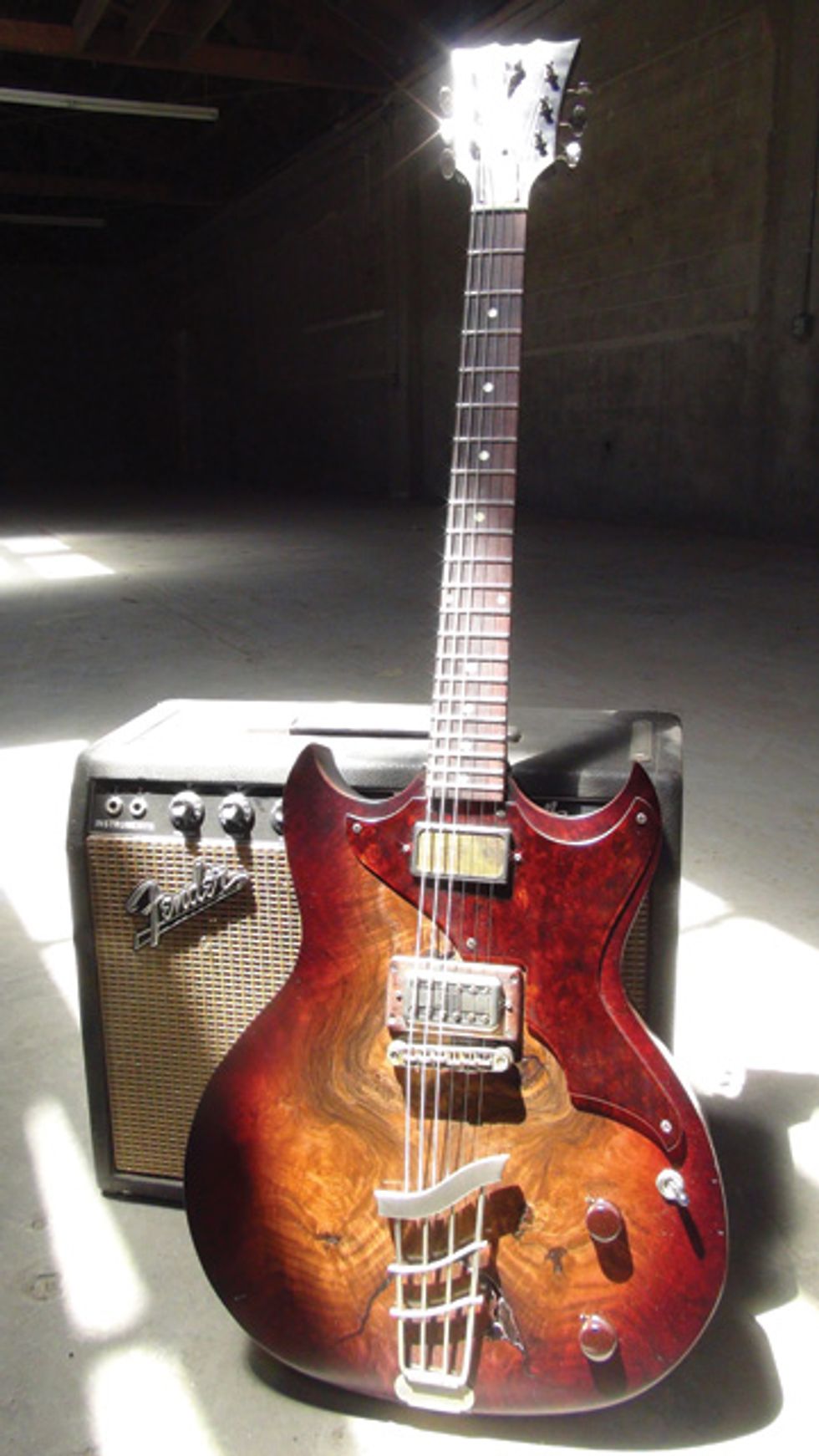
"We didn't chamber it simply for weight-reduction. We agreed during our conversations that the tone of a semi-hollow instrument has the best warmth and growl without the howl [laughs]." The headstock is made of nitrate celluloid−tortoiseshell−with a custom-made sterling silver crow skull inlaid in the center. The tuners are aged nickel, pre-war-style, 18:1-ratio Grovers.
The next week during tour rehearsals, Homme pulled Currie aside and told him that he, Troy Van Leeuwen, and Dean Fertita were all interested in buying guitars, but only one of the guitars was available for purchase. So Currie agreed to build Troy his own model. "That's when Josh's eyes lit up and he asked me to build him a custom model, too." Van Leeuwen's guitar was fairly easy because Currie had an idea in his head and the templates were based on the Trisonic he found in Leo Fender's shop while working at G&L. But Homme's guitar was custom from the ground-up.
"I had no safety net or platform to go off of because of the organic nature of this build. I usually have the benefit of knowing the design and how it'll balance tonally with all the different woods and pickups." confesses Currie. "So other than the aged-neck timbre and the body-chambering, I had no actual knowledge of how the end result would sound, just a familiarity with all the pieces individually."
Currie and Homme had several conversations about feel, look, vibe, tones, body size, shapes, pickups, and playability. After hearing the custom Gold Coil in the neck position of Currie's '59 Custom model, Homme insisted that it be part of the equation. For the bridge position, Currie went with a customwound Arcane Ultra'Tron. Homme wanted a big neck profile so Currie based it on his early '59 double-cut Les Paul Jr.—about .980" at the nut and 1.15" at the 13th fret. "I like to do a 1938-style 'soft V' carve and roll it into a '59 'D' carve at the 9th fret so that it feels natural and fills your hand but remains playable for long gigs," Currie says. "It's carved from a 200-year-old piece of Honduran mahogany that came out of the Los Angeles library and the fretboard is old-stock Brazilian I had stashed."
For his custom builds, Currie uses old mahogany he amassed while working in the historic restoration of old buildings around Los Angeles and Southern California. "All of it is very old, very mature, very dry, and very bell-like," he says. "I started using it for two reasons: One, because it was old, stable, and resonate. And two, because it was readily available and the best way to get a new guitar to feel, behave, and sound old."
The reclaimed Honduran mahogany body of Homme's guitar is a chambered, one-piece slab. "We didn't chamber it simply for weight-reduction. We agreed during our conversations that the tone of a semi-hollow instrument has the best warmth and growl without the howl [laughs]." The top is a 300-year-old burl walnut (the knots still have moss and earth in them) and it was outfitted with a trapeze-style tailpiece like one from a very rare '50s Kay guitar. The headstock is made of nitrate celluloid—tortoiseshell—with a custom-made sterling silver crow skull inlaid in the center. The tuners are aged nickel, pre-war-style, 18:1-ratio Grovers.
"Josh freaked when I finally gave it to him the night they taped the KCRW special in L.A.," says Currie. "It was great seeing him playing it that night at the showcase and it sounded better than I hoped and planned because of its round, creamy articulation. I've been a big fan of the band and I'm honored to get the unusual request from an artist like Josh—that's the type of guitar building I live for."
A special thanks to Gabriel Currie of Echopark Guitars for allowing us to feature this fine piece of gear and its story.
[Updated 10/7/21]


